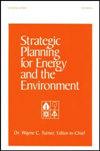Electrochemical Dechlorination of Trichloroethylene by Manganese Phthalocyanine: Performance and Mechanisms
Q3 Environmental Science
Strategic Planning for Energy and the Environment
Pub Date : 2022-02-04
DOI:10.13052/spee1048-5236.4047
引用次数: 1
Abstract
Trichloroethylene (TCE) is one of the most abundant persistent organic pollutant in subsurface environment. TCE can be reduced electrochemically, but the extremely negative applied potential limits the application of this technology. Manganese phthalocyanine (MnPc) catalyst was used for the electrochemical reductive dechlorination of TCE. The results show that MnPc can be reduced by electrons attachment at −-0.21 V, −-1.22 V and −-1.77 V, respectively. With the decrease of applied potential from −-0.3 V to −-1.8 V, the transformation from TCE to dichloroethylene (DCE) efficiency increased from 19.9% to 41.8% after 5 hours of reaction. Although the electron transfer ability was enhanced with applied potential decreasing, the intensive HER caused the electron selectivity decreased when MnPc attached more electrons. MnPc catalyze the electrochemical reduction of TCE, which has potential application on the remediation of TCE-contaminated groundwater.酞菁锰对三氯乙烯的电化学脱氯:性能和机理
三氯乙烯(TCE)是地下环境中含量最多的持久性有机污染物之一。TCE可以通过电化学方法降低,但极负的应用电位限制了该技术的应用。采用酞菁锰(MnPc)催化剂对三氯乙烯进行电化学还原脱氯。结果表明,在−-0.21 V、−-1.22 V和−-1.77 V下,电子的附着可使MnPc降低。随着外加电位从−-0.3 V降低到−-1.8 V,反应5 h后,TCE到二氯乙烯(DCE)的转化效率由19.9%提高到41.8%。虽然电子传递能力随着外加电位的降低而增强,但当MnPc附着更多电子时,强HER导致电子选择性降低。MnPc催化TCE的电化学还原,在TCE污染地下水的修复中具有潜在的应用前景。
本文章由计算机程序翻译,如有差异,请以英文原文为准。
求助全文
约1分钟内获得全文
求助全文
来源期刊

Strategic Planning for Energy and the Environment
Environmental Science-Environmental Science (all)
CiteScore
1.50
自引率
0.00%
发文量
25
 求助内容:
求助内容: 应助结果提醒方式:
应助结果提醒方式:


